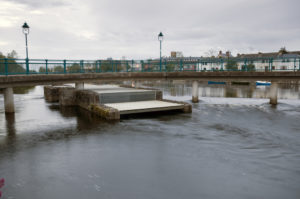 Staff from the Environmental Science Department at IT Sligo are to collaborate with Buffalo State College in the USA in examining the threat to water sources by such invasive species as the zebra mussel and a recent invader to Ireland, the Asian clam.
Staff from the Environmental Science Department at IT Sligo are to collaborate with Buffalo State College in the USA in examining the threat to water sources by such invasive species as the zebra mussel and a recent invader to Ireland, the Asian clam.
The two colleges recently signed a Memorandum of Understanding (MOU) in order to promote research and teaching collaboration, and IT Sligo staff have been invited to travel to the Great Lakes Centre (GLC) at Buffalo State, to conduct research with some of the international experts based there.
Dr Francis Lucy, lecturer and leader of the Fisheries Management course at IT Sligo, welcomed the development, saying it would bring a fresh perspective and focus to the work being undertaken by both colleges. “Unfortunately one of the greatest threats to biodiversity is caused by invasive species such as the zebra mussel and the recent invader, the Asian clam,” said Dr Lucy who is a director of Inland Fisheries Ireland (IFI). “Both these shellfish cause great changes to our freshwater ecosystems”.
Alexander Y. Karatayev, director of the GLC and Lyubov Burlakova, a research scientist there, are international experts on the spread of aquatic invasive species. Dr. Lucy met them over a decade ago, when researching the Irish zebra mussel invasion. “We are very fortunate that they wish to share their expertise with us, as they have studied aquatic invasive species in both Belarus and the USA” she explained.
In 2007, Karatayev was the lead author of an article that linked the spread of invasive aquatic species to “the globalization of economies and trade”.
The researchers have observed evidence of this trend in Ireland. “Since Ireland joined the EU, and its international trade has increased, invasive species introductions have increased, too,” said Karatayev. He cited Corbicula fluminea, a clam native to Asia, as an example. “It was found in the United States in 1938, and in the 1990s in South America. It was found in Ireland just two years ago”.
Increased trade and travel during the Celtic Tiger also had an impact on the spread of invasive species in our waterways, according to Dr Lucy.
She pointed out that IT Sligo has “ a wealth of lakes and rivers on our doorstep” and that members of the Environmental Science Department at the Institute have long been committed to research, which targets conserving and improving water quality and biodiversity’.
IT Sligo staff will visit Buffalo State next spring to conduct research with scientists and faculty members at the GLC on Lough Erie. “We are very interested in the resources of their field station,” said Dr Lucy, “and they are very interested in the opportunity to collaborate with us. We hope that, in the near future, we will be able to develop international courses for Buffalo State students and IT Sligo students, too”.